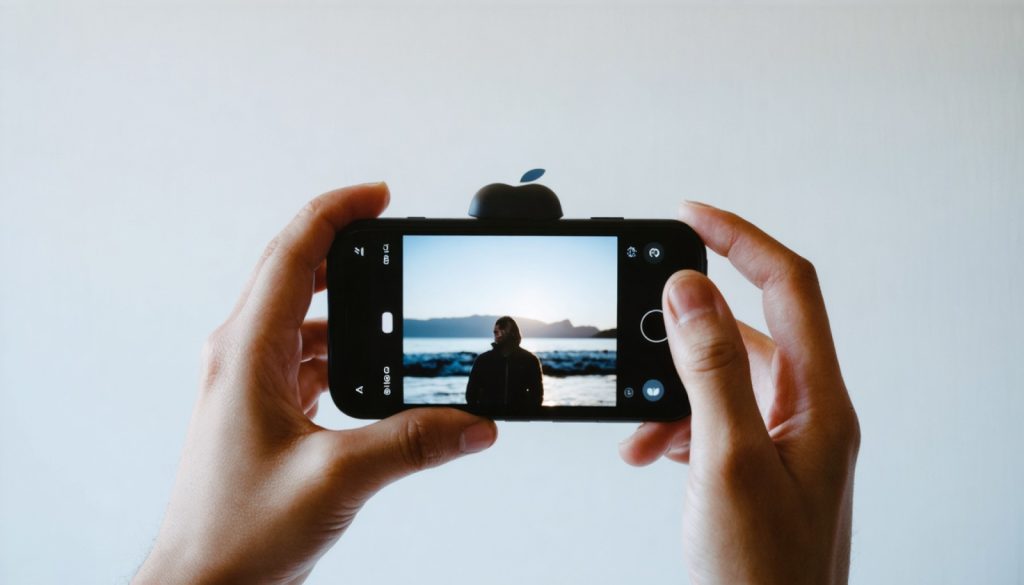
- The iPhone has revolutionized photography, transforming from a simple 2-megapixel camera in 2007 to advanced triple-camera systems by 2023.
- Apple’s innovations in computational photography, including Night Mode and Deep Fusion technology, have greatly enhanced user experience and image quality.
- The iPhone has democratized photography, allowing aspiring photographers to explore their passion without expensive equipment.
- Capturing and sharing moments through the iPhone has had significant impacts, including documenting crucial historical events and societal changes.
- The iPhone empowers users to create vibrant, detailed images, making it a powerful tool for personal and collective storytelling.
- Through constant technological advancements, the iPhone continues to inspire creativity and redefine how we see and capture the world.
Every once in a while, a masterpiece reshapes our world. In the early days of digital technology, a sleek rectangle of glass and metal emerged from the creative labs at Apple, disrupting everything we knew about mobile devices. The iPhone, beyond its role as a communication tool, revolutionized one often-overlooked aspect of our lives—photography.
When Steve Jobs unveiled the original iPhone in 2007, it was not just a phone; it was a portal to new possibilities. It wasn’t long before these possibilities included holding a powerful camera in the palm of your hand. The evolution from the humble 2-megapixel shooter of the first iPhone to today’s state-of-the-art triple-camera systems is nothing short of a technological odyssey.
Fast forward to 2023, and the iPhone has transformed from an innovative gadget into an integral part of our daily storytelling. With each new iPhone release, camera technology has leaped forward—capturing moments in vibrant detail previously reserved for expensive, professional cameras. Stunning landscapes, lively city scenes, and exquisite portraits are now effortlessly snapped by amateur and seasoned photographers alike. Each photograph becomes a vibrant tapestry woven with the threads of light, detail, and color.
Apple’s steadfast focus on enhancing user experience manifests vividly in its camera technology. Features like Night Mode turn nocturnal captures into well-lit masterpieces, while Deep Fusion technology stitches together multiple images in milliseconds to craft a single, perfect shot. Computational photography remains at the forefront of iPhone innovation, with machine learning algorithms refining every frame before it even appears on the screen.
The iPhone has democratized photography in a way that even the inventors of early cameras may have never imagined. Aspiring photographers no longer need thousands of dollars of equipment to explore their passion. The result? A vibrant explosion of creativity and expression shared across social media platforms and beyond.
Beyond individual content creation, the iPhone’s impact resonates deeply in historical and societal contexts. Entire revolutions have been documented on iPhones, these pocket-sized portals capturing the raw essence of human experience and broadcasting it to global audiences with authenticity and immediacy.
The takeaway? The iPhone continues to redefine the art of photography, empowering individuals to see the world through a lens sharpened by innovation. With their finger on a magical button, users do more than just take pictures—they immortalize their world.
As we continue to ride the waves of technological advancement, the iPhone stands not just as a symbol of Apple’s ingenuity but as a testament to our collective desire to capture and share life’s moments in their truest form. In a world where every second brings change, the iPhone possesses the extraordinary power to make fleeting moments eternal, one photograph at a time.
The iPhone Evolution: How Apple’s Innovation Transformed Photography Forever
The iPhone Camera Renaissance
In the realm of digital innovation, few devices have had as profound an impact as the iPhone, particularly in how we capture and share life’s moments. Initially introduced in 2007, the iPhone didn’t just redefine mobile telephony; it ushered in a new era of mobile photography. But what makes its evolution so remarkable?
Technological Advancements in iPhone Cameras
From its humble beginnings with a 2-megapixel camera, Apple has continually pushed the envelope in camera technology. Here are some of the standout evolutions over the years:
– Lens and Megapixel Upgrades: The transformation from a single-lens, low-resolution camera to multiple high-resolution lenses is perhaps the most visible change. The iPhone 14 Pro, for example, boasts a 48-megapixel main sensor, showcasing Apple’s commitment to image clarity and detail ([source: DXOMARK](https://www.dxomark.com)).
– Computational Photography: Features like Smart HDR, Night Mode, and Deep Fusion leverage machine learning to enhance the photography experience. This computational approach allows for superior image processing that automatically corrects lighting and sharpness.
– Advanced Image Stabilization: Optical image stabilization has developed from basic software solutions to cutting-edge, sensor-shift technology, drastically reducing blur in motion-filled environments.
How-to Steps & Life Hacks for iPhone Photography
Are you looking to elevate your iPhone photography? Here are quick tips:
1. Use the Grid Feature: Activate the “Grid” setting in the camera app to apply the rule of thirds for more compelling compositions.
2. Master Night Mode: When shooting in low light, keep your phone steady. Use a tripod or balanced surface to maximize Night Mode’s effectiveness.
3. Experiment with Portrait Mode: Utilize Portrait Mode to apply depth effects, making subjects pop while softly blurring backgrounds.
Real-World Use Cases & Market Trends
The impact of advanced iPhone cameras is evident in various sectors:
– Social Media: Platforms like Instagram and TikTok thrive on visual content, fueling demand for high-quality mobile photography.
– Entertainment and Journalism: Many documentaries and news stories use smartphones for on-the-fly coverage and immediate sharing.
– Art and Creativity: Amateur photographers and artists frequently rely on iPhones to create and share work, democratizing the art form.
Reviews, Comparisons, and Pricing Insights
According to expert reviews ([source: The Verge](https://www.theverge.com)), the iPhone consistently leads in camera quality among smartphones. However, competitors like Google’s Pixel series and Samsung’s Galaxy phones offer formidable alternatives, especially in specific settings such as low-light or ultra-wide photography.
Pricing for top-tier models like the iPhone 14 Pro Max typically starts above $1,000, aligning with comparable flagship devices from other brands.
Controversies & Limitations
Despite its capabilities, the iPhone is not without critiques:
– Price Point: The high cost can be prohibitive for some users.
– Battery Life: High-end camera functions drain battery quickly, which can be a significant downside during extensive usage.
– Customization Limitations: Unlike some competitors, Apple’s approach to UI and feature customization remains relatively closed.
Sustainable Practices in Apple’s Innovation
Apple has publicly committed to environmental responsibility, emphasizing the use of recycled materials in manufacturing and aiming for carbon neutrality ([source: Apple Sustainability](https://www.apple.com)).
Actionable Recommendations
To maximize your iPhone’s photography potential:
– Regularly update your device to benefit from Apple’s incremental camera software improvements.
– Invest in external lenses and accessories to broaden your photographic toolkit.
– Engage in online communities and tutorials that explore advanced iPhone photography techniques.
Conclusion
The continual evolution of the iPhone signifies much more than technological progress; it’s a cultural shift that has redefined photography’s role in our daily lives. For those eager to harness its powers, mastering its diverse features can be your first step in transforming ordinary moments into extraordinary memories.
For more insights into Apple’s revolutionary technology, visit Apple.



